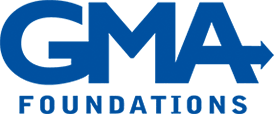
Online charity rating systems are a good compliance tool, yet strong financial due diligence goes to the core of a grantmaker’s well-considered priorities. We advise an approach that centers on identifying, prioritizing, and operationalizing financial attributes – and going confidently into conversation with nonprofit leaders for fuller information. So, what should a hesitant grant reviewer do before diving into the financial reports?
1. Identify financial attributes that make sense
Rather than dive right into the financial data and start calculating ratios, first identify the attributes you desire of a prospective grant recipient. This will help you determine what financial data to collect and review.
When we ask what they are looking for in financial reports, grantmakers often say they want to be sure that grantees are financially sound and have good governance practices. They also want to find any “red flags.”
Measuring these attributes depends on definitions that may vary. What, for example, does financial soundness entail? One grantmaker may define financial soundness as having enough cash to meet current financial obligations. He would likely focus on current and quick ratios. Another may define financial soundness as having a small amount of debt compared to equity. She would focus on the organization’s debt to equity ratio.
The financial attributes sought from prospective grantees should also align with the grantmaker’s guidelines and philosophy. If a foundation makes grants to startup charities with innovative programs, it makes little sense to evaluate a charity’s current ratio or debt-equity ratio, since these typically appear unfavorable with new charities. For startups, evaluating the business plan and governance structure may yield better indicators.
For thorough due diligence, use a set of attributes that uncovers what matters most to you. Consider:
|
|
2. Decide how to weight the financial attributes
Next, rank the chosen attributes in order of importance. You might have a high risk tolerance and be unconcerned about debt ratio. On the other hand, you might value strong liquidity versus reinvestment of cash reserves.
After ranking the attributes, consider weighting the scores, assigning a value to each attribute based on its relative importance. For example, applicants may receive a weight of 1 if they exhibit strong governance practices, such as the adoption of whistle-blower and conflict-of-interest policies. They may receive a weighting of 1 to 5 depending upon liquidity. Of course, tax compliance would always be weighted highest priority.
Once the desired attributes are listed and valued, operationalize them by defining what to measure and how to measure it. For instance, if you value efficiency, determine the desirable ratio of programmatic expenses to total expenses. A word of caution here, since this ratio is heavily influenced by the method used to allocate overhead costs, ask prospective grantees to describe in detail their overhead allocation methodology, especially if you plan to compare organizations within a cohort.
3. Dig for qualitative indicators
In advising grant reviewers, we emphasize the importance of understanding both what is in the documents and also the qualitative indicators that may be missing.
The audited financial statements state that they have been prepared in accordance with generally accepted accounting principles, but they say little about the entity’s strategic direction, the effectiveness of its leadership, and quality of its programs, or even the organization’s financial position at the current moment.
Remember that the financial statements are historical documents. By the time a grant applicant submits these items with their application, the documents may be many months old, and things could have changed. To assess the current financial situation, grant reviewers need to know how to dig deeper.
Substantive information in the audit notes and in the Form 990 and its attachments will support further evaluation. The audit notes will reveal whether there is pending litigation or related party transactions. The Form 990 and its schedules will provide information about governance practices.
For example, if having an independent board is a desirable attribute for a prospective grantee, you would operationalize independence by requiring that all board members be free from conflicts of interest with the charity. While ‘independence’ using this metric is easily determined by evaluating the Form 990 responses in Part I, lines 3 and 4, we recommend digging deeper to examine responses to Schedule L and other corroborating responses in Schedule O. These schedules may indicate whether the charity has engaged in transactions with interested persons (Schedule L) and describe how the charity monitors independence.
Since there can be some subjectivity in the evaluation of seemingly objective criteria, such as independence, a grantmaker with multiple reviewers should make sure that qualitative data is evaluated consistently. That way, scoring of the attributes is also done consistently.
With a scoring system in place, you are able to identify the documents that contain the needed data and begin to analyze.
4. Go beyond the reports, ask questions
Uncertainty about which questions to ask is a common problem faced by grant reviewers. Consequently, conducting financial due diligence can be a daunting task. There is no substitute for practice.
Do not hesitate to request a conversation with the charity’s financial officer; their perspective will likely enrich your understanding of the proposal. Even seasoned grantmakers make a practice of asking questions about financial data they find confusing or inconclusive.
In summary
Start your due diligence by first identifying and prioritizing the aspects of financial health you are seeking. The process of weighting the various attributes is helpful when comparing similar organizations within a cohort. Asking questions to help clarify the charity’s financial data will add further context, help grantmakers gain expertise, and build a transparent relationship with the charity.
________________
Pamela Labonte Maksy is GMA’s Chief Financial Officer. She also advises GMA’s clients and leads workshops for grantmakers, including Philanthropy Massachusetts’ Let’s Dive In and Explore the Form 990. Reach Pamela at pmaksy@gmafoundations.com.
